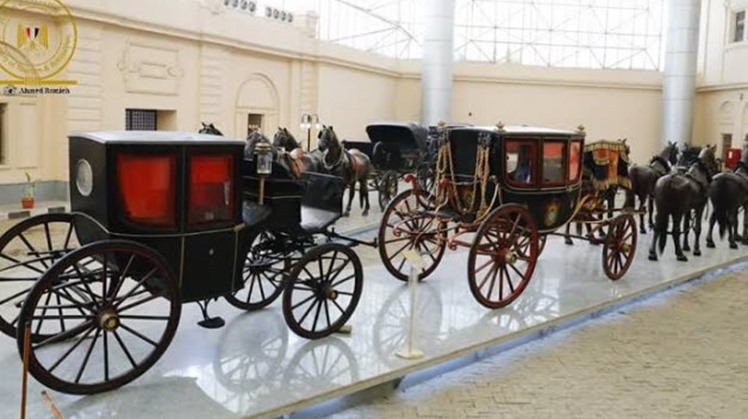The state is always keen to preserve its ancient history that our ancestors left us, and to present gifts to the Egyptian people to see those ancient Egyptian treasures inside large cultural edifices, and today President Abdel Fattah El-Sisi inaugurates a group of national projects such as the Sharm El Sheikh Museum and Kafr El Sheikh, in addition to the Royal Vehicles Museum. Which we review all the information about the museum vehicles.
The Royal Vehicles Museum, located in Bulaq Abu Al-Ela, is one of the rarest museums, as it is the fourth of its kind in the world after the museums of Russia, England and Austria, and the day before yesterday, Dr. Khaled Al-Anani, Minister of Tourism and Antiquities, visited the museum, to find the final touches of the museum.
The museum, which was established during the reign of Khedive Ismail (1863-1879), includes an impressive collection of collectibles, the most prominent of which are the royal chariots of various sizes and types, dating back to the period of the rule of the Muhammad Ali Pasha family in Egypt, as well as a group of horse crews and supplies, in addition to special clothes With stirrup workers whose jobs are related to carriages, as well as a collection of oil paintings of kings and princesses dating from the same historical period.
The cost of the museum's restoration works reached 63 million pounds
A new display scenario was developed in the museum, which began its restoration in 2001 and then stopped completely years ago, and then began work in 2017 after it was suffering from great neglect, and the cost of the restoration was about 63 million pounds, and the display scenario aims to shed light on all the unique artifacts. Through 5 exhibition halls included in the museum, it is the Antikkhana hall, which will display the vehicles and vehicles donated to the Alawite family during various occasions, and the "reception hall" with a cinematic projection screen and a documentary film on the time period of the upper family is displayed, and the "truss (procession) hall". The street in the royal eras and displays the rarest types of vehicles, which is the automatic carriage, which is distinguished by its accuracy and luxurious decoration. It is the gift of Emperor Napoleon III and his wife, Empress Eugenie, to Khedive Ismail at the time of the opening of the Suez Canal in 1869 AD, then the Hall of "Royal Events" and includes a group of vehicles that were used by individuals The upper family during various official occasions, in addition to oil paintings consisting of portraits of kings, queens, princesses and princes of the upper family, and the "horse hall" which includes a group of fattarin to display clothes For workers on royal carts.
In the museum, we will find a set of cards explaining all the artifacts using the Braille method for the visually impaired, and a map explaining the halls of the museum at the entrance, which has been completed, has been drawn up, and paved corridors and ramps have been identified and positioned for ease of climbing and descending to facilitate the movement of wheelchairs for people with mobility disabilities And, indicative panels will be placed in all halls using sign language for people with hearing disabilities, in addition to allocating toilets for people with special needs equipped in accordance with international standards.
Tickets for the Vehicles Museum have been set at 20 pounds for Egyptians and 5 pounds for students, while the price of a ticket for foreigners is 100 pounds, and 50 pounds for foreign students, and the price of using a photographic camera is 50 pounds, in addition to using mobile phone cameras during the visit for free.
 Sun, Nov. 1, 2020
Sun, Nov. 1, 2020